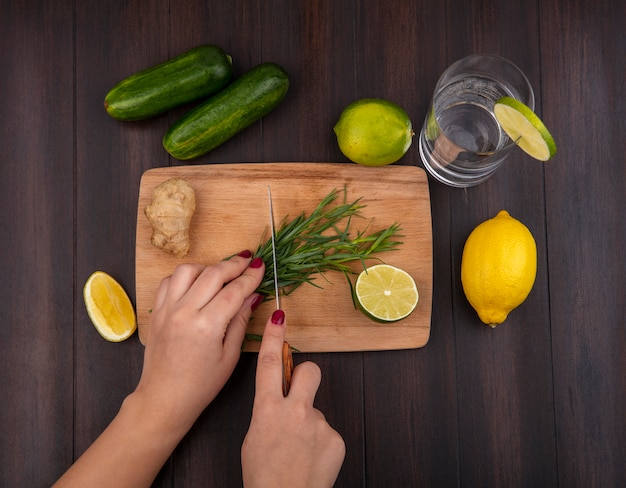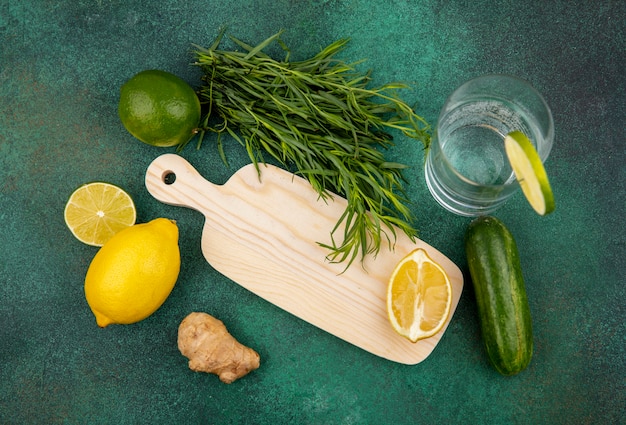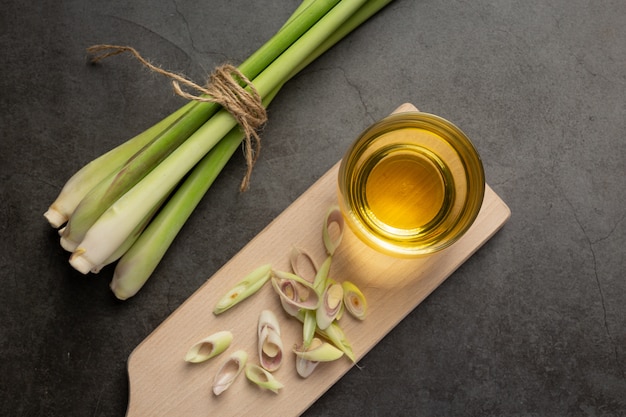(Part 1) Getting to Know Lemongrass

The Lowdown on Lemongrass
First things first, lemongrass isn't actually a grass, it's part of the citronella family, which also includes ginger and galangal. It's a native of Southeast Asia, and they've been using it in cooking and medicine for ages. The distinctive citrusy flavor and fragrance, kind of like a mix of lemon and ginger, is what makes it so special.
Picking the Perfect Lemongrass
To get the most out of lemongrass, you need to choose the right stalks. You're looking for ones that are firm, bright green, and smell super fragrant. Avoid anything that looks limp, brown, or mushy. The thicker the stalk, the more flavour you'll get.
How to Use Lemongrass in Your Cooking
There are a few different ways to use lemongrass in your cooking:
- Whole Stalks: This is the simplest method. You just add the stalks whole to your dish. To release more flavor, you can bruise them with the back of a knife.
- Sliced or Chopped: You can slice or chop lemongrass and add it to soups, stews, and curries. This releases more flavor and adds a nice textural element.
- Infused Oil: Lemongrass oil is a great way to add a subtle lemony flavour to dishes. Just infuse some oil with chopped lemongrass.
- Paste: You can make a lemongrass paste by blending it with other ingredients. This is a great option for dishes where you want a more concentrated flavour.
(Part 2) Unlocking the Flavor of Lemongrass

Blending Flavors: A Lemongrass Symphony
Lemongrass is so versatile, it works with a wide range of flavors. Here are some of my favorite pairings:
Complementary Flavors: A Match Made in Heaven
- Coconut: The creamy sweetness of coconut really brings out the citrusy notes of lemongrass. It's a classic combination.
- Lime and Lemon: This creates a zesty and refreshing combination, perfect for summer dishes.
- Ginger and Garlic: This adds a spicy kick to your dishes. It's a match made in heaven for lemongrass.
- Chili: This creates a delicious balance of heat and citrus. It's like a party in your mouth!
- Fish and Seafood: The delicate flavour of lemongrass compliments the freshness of fish. It's perfect for lighter dishes.
(Part 3) cooking techniques for Maximum Flavor

Lemongrass Techniques: Mastering the Art
Here are a few key techniques to get the most out of lemongrass. They'll make a huge difference in how your dish turns out.
1. Infusing: The Subtle Art of Flavour
Infusing lemongrass into liquids like soups, stews, and sauces is a great way to give them a subtle, but delicious flavour. Here’s how to do it:
- Bruise: Use the back of a knife to lightly bruise the lemongrass stalks. This helps release their oils and flavour.
- Add to Liquid: Simply add the bruised stalks to your chosen liquid and simmer for at least 15 minutes. The longer you simmer, the stronger the flavour will be.
- Remove: Before serving, remove the lemongrass stalks from the liquid. The flavour will still be there, but the stalks themselves will be a bit tough to eat.
2. Sautéing: A Deeper Dimension of Flavor
Sautéing lemongrass adds a deeper dimension of flavour and aroma to your dishes. Here’s how:
- Slice or Chop: Slice or chop lemongrass into thin pieces.
- Sauté: Add the sliced/chopped lemongrass to a hot pan with a little oil. Sauté until fragrant, about 2-3 minutes. You'll know it's ready when the aroma fills the kitchen.
- Combine: Add your other ingredients and continue cooking as desired.
3. Grilling: Smoky, Charred Perfection
Grilling lemongrass adds a smoky, charred flavor that complements the citrusy notes perfectly. It's great for summer grilling:
- Prepare: Remove the outer layer of the lemongrass stalk and trim the root end.
- Grill: Grill the stalks over medium heat for a few minutes, turning occasionally, until lightly charred and fragrant. You'll know it's ready when the aroma fills the air.
- Use: You can add grilled lemongrass to sauces, marinades, or serve it as a garnish.
(Part 4) Lemongrass Recipes: A culinary adventure
Lemongrass is so versatile, it can be used in so many dishes. It's like a blank canvas, waiting for you to create something delicious. Here are a few of my favorite recipes that showcase the magic of lemongrass:
1. Lemongrass Chicken Curry: A Taste of Southeast Asia
This is a classic Southeast Asian dish that's packed with flavor. The creamy coconut milk base and fragrant lemongrass make for a truly satisfying meal.
2. Lemongrass and Coconut Noodle Soup: A Refreshing Delight
This light and refreshing soup is perfect for a summer day. The lemongrass adds a citrusy kick, while the coconut milk gives it a creamy texture.
3. Lemongrass and Ginger Stir-Fry: Quick and Easy Flavor
A quick and easy stir-fry is a great way to use lemongrass. It's perfect for a weeknight meal. The ginger and lemongrass add a spicy and citrusy punch.
4. Grilled Lemongrass Shrimp Skewers: A Summer BBQ Must-Have
These skewers are perfect for a barbecue or summer gathering. The lemongrass and shrimp create a delicious and fragrant combination.
(Part 5) Beyond the Kitchen: The Many Uses of Lemongrass
Lemongrass isn't just for cooking - it's a natural wonder with a whole range of uses.
1. Mosquito Repellent: A Natural Way to Keep Bugs Away
Lemongrass oil is a natural mosquito repellent. You can use it in a diffuser, add it to a spray bottle with water, or even make your own homemade candles.
2. Skincare: A Natural Beauty Booster
Lemongrass oil is known for its anti-inflammatory and antibacterial properties, making it a great addition to your skincare routine. You can add a few drops to your moisturizer or make a DIY face mask.
3. Relaxing Bath: Escape to a Tropical Paradise
Add a few drops of lemongrass oil to your bathwater for a relaxing and invigorating experience. The citrusy aroma will calm your mind and body, transporting you to a tropical oasis.
(Part 6) Storing Lemongrass: Keeping it Fresh
Keeping lemongrass fresh is important to make sure it retains its amazing flavour. Here’s how to store it properly:
1. Refrigerate: Keeping it Cool
Wrap lemongrass stalks in a damp paper towel and store them in a plastic bag in the refrigerator. They should last for up to a week.
2. Freeze: Long-Term Storage
You can freeze lemongrass for longer storage. Simply wrap the stalks individually in plastic wrap or aluminum foil and store them in a freezer-safe bag. Frozen lemongrass can last for several months.
(Part 7) The Joy of Experimentation: Let Your Creativity Flow
The beauty of lemongrass is that it invites you to experiment. Don’t be afraid to play around with different flavors and techniques to find what you enjoy.
I’ve found that incorporating lemongrass into my cooking has been a real game-changer. It adds this fresh, vibrant flavor and a touch of exoticism to even the simplest of dishes. I encourage you to embrace this wonderful herb and let your culinary imagination run wild.
(Part 8) Lemongrass: Beyond the Basics
Let's delve a little deeper into some of the more nuanced aspects of lemongrass. There's a whole world to explore!
1. Different Varieties: Exploring the World of Lemongrass
While there are several varieties of lemongrass, the most common ones are:
- Citronella grass: This is the most widely used variety and has a strong citrusy flavor. It's the one you're most likely to find in stores.
- East Indian lemongrass: This variety is milder than citronella grass and has a more subtle citrus flavour. It's a good option if you prefer a less intense flavor.
- West Indian lemongrass: This variety is slightly sweeter than citronella grass and has a more floral aroma. It adds a unique twist to dishes.
2. Lemongrass Powder: A Convenient Option
Lemongrass powder is a convenient option for those who don’t want to deal with fresh lemongrass. It’s made from dried and ground lemongrass, and it’s often used in soups, stews, and curries. You can find it in most Asian grocery stores. However, fresh lemongrass always has a more complex flavour, so it's my personal preference.
3. Lemongrass Tea: A Refreshing and Invigorating Drink
Lemongrass tea is a refreshing and invigorating drink. It’s made by steeping lemongrass in hot water for several minutes. The tea has a distinctive citrusy flavour and is said to have several health benefits. You can find ready-made lemongrass tea bags or make your own at home using fresh lemongrass.
(Part 9) FAQs: Your Lemongrass Questions Answered
It's always good to have answers handy. Let's address some common questions about lemongrass.
1. Can you eat the whole lemongrass stalk?
You can eat lemongrass stalks, but the tough outer layer can be chewy. Most people prefer to remove the outer layer and use the inner part. The white, bulbous bottom of the stalk is the most flavorful part.
2. Is lemongrass good for you?
Lemongrass is a good source of antioxidants and has anti-inflammatory properties. It’s also been used in traditional medicine for various ailments. It’s a nutritious addition to your diet.
3. Where can I buy lemongrass?
You can find fresh lemongrass in most Asian grocery stores and some supermarkets. You can also find it online or at farmers’ markets.
4. How do I know if lemongrass is fresh?
Fresh lemongrass will be firm, bright green, and fragrant. Avoid lemongrass that is limp, brown, or mushy.
5. Can I substitute lemongrass with something else?
If you don’t have lemongrass, you can substitute it with a combination of lemon zest and ginger or a lemon-infused herb like lemon verbena. However, lemongrass has a unique flavour that’s hard to replicate. It's truly a special ingredient.
(Part 10) A culinary journey with Lemongrass: Embrace the Adventure
I’ve always believed that cooking is a journey of discovery, and exploring new ingredients like lemongrass is what makes it so exciting. So go forth, explore the vibrant world of lemongrass, and see where it takes your culinary adventures.
And as always, let me know if you have any questions. I’m always happy to share my knowledge and passion for this amazing herb.
Everyone is watching

How to Cook Frozen Lobster Tails Perfectly: A Step-by-Step Guide
RecipesLobster. Just the word conjures up images of lavish meals, special occasions, and a taste of luxury. But let's...

Pigs in a Blanket Cooking Time: How Long to Bake for Perfect Results
RecipesAh, pigs in a blanket. Just the name conjures up images of those delightful little parcels of crispy pastry en...

Pork Fillet Cooking Time: How Long to Cook It Perfectly
RecipesPork fillet, or tenderloin as it's sometimes called, is a real favourite in our house. It's so versatile, and...

The Ultimate Guide to Cooking Delicious Frankfurters
RecipesLet's face it, we all love a good frankfurter. It's a classic, simple, and always satisfying. But let's be rea...

Wolf Meat Recipes: A Guide to Cooking Wild Game
RecipesLet's be honest, you don't see wolf meat at your local butcher shop every day. It's a bit of a wild card, but ...
